Family
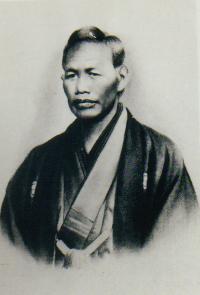 As a young America began to receive immigrants from other countries, it began to achieve its “melting pot” status. It wasn’t until May 7, 1843, that the first Japanese immigrant would arrive on the scene. A young 14-year-old fisherman, named Manjiro in America by way of a whaling ship. It wasn’t really an intentional immigration, because the boy and his fellow crew members were caught in a violent storm that caused their ship to wash up on a desert island 300 miles away from their coastal Japanese village. It was rather a “Gilligan’s Island” kind of situation, except that it didn’t last nearly as long as the famous sitcom.
As a young America began to receive immigrants from other countries, it began to achieve its “melting pot” status. It wasn’t until May 7, 1843, that the first Japanese immigrant would arrive on the scene. A young 14-year-old fisherman, named Manjiro in America by way of a whaling ship. It wasn’t really an intentional immigration, because the boy and his fellow crew members were caught in a violent storm that caused their ship to wash up on a desert island 300 miles away from their coastal Japanese village. It was rather a “Gilligan’s Island” kind of situation, except that it didn’t last nearly as long as the famous sitcom.
After five months on the island, an American whaling ship showed up and rescued Manjiro, who was later adopted by American Captain William Whitfield, who renamed him John Mung and brought him back to the states to his home in Massachusetts. While he was grateful for his rescue, Manjiro always felt drawn to his own country, and eventually returned to Japan. He then became a samurai and worked as a political emissary between his home country and the West, according to reports, but it would be another 20 years…around 1860, before Japanese immigrants really began coming to the United States. At that point, groups of 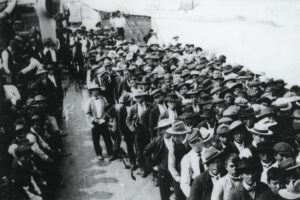 Japanese immigrants began arriving in the Hawaiian Islands. The Japanese immigrants were hired to help keep the production of the plantations fluid and progressive. These immigrants worked mainly in the sugarcane fields or with pineapple production. Many of these immigrants later relocated to areas of California, Washington, and Oregon. These people did not come over as slaves, but were rather, hired to work these fields.
Japanese immigrants began arriving in the Hawaiian Islands. The Japanese immigrants were hired to help keep the production of the plantations fluid and progressive. These immigrants worked mainly in the sugarcane fields or with pineapple production. Many of these immigrants later relocated to areas of California, Washington, and Oregon. These people did not come over as slaves, but were rather, hired to work these fields.
Things really picked up after 1886, and between then and 1911, over 400,000 Japanese men and women immigrated to America…mostly to Hawaii and the West Coast. Unfortunately, as was the case with the Chinese immigration movement, the Japan immigration movement brought with it a heightened level of agitation with people living in the United States. The new immigrants were viewed as interlopers, taking the jobs of the citizens, and so they were. As a result, in 1907 there was an agreement between the nation of Japan and the 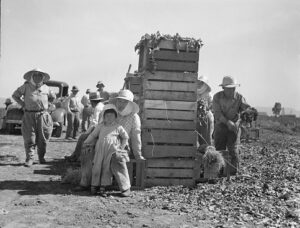 United States to have Japan stop issuing worker’s passports to come into the United States. Of course, immigration was not completely stopped. There were exceptions, like the exceptions for Japanese immigration for the spouses of those who were already working in the United States, and a select group of individuals who were requested to move to America. However, in 1924 a formal act called the Immigration Act of 1924 helped to tighten the banning of individuals. Nevertheless, it is Manjiro who is credited with getting the whole Japanese immigration started, and in 1992, he was commemorated for his early arrival when Congress dedicated the month of May as Asian American and Pacific Islander Heritage Month.
United States to have Japan stop issuing worker’s passports to come into the United States. Of course, immigration was not completely stopped. There were exceptions, like the exceptions for Japanese immigration for the spouses of those who were already working in the United States, and a select group of individuals who were requested to move to America. However, in 1924 a formal act called the Immigration Act of 1924 helped to tighten the banning of individuals. Nevertheless, it is Manjiro who is credited with getting the whole Japanese immigration started, and in 1992, he was commemorated for his early arrival when Congress dedicated the month of May as Asian American and Pacific Islander Heritage Month.
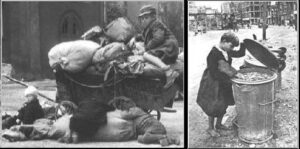 Wars leave unfortunate consequences, one of the biggest being orphaned children. World War II is no exception to that rule. After the surrender of Germany, the nation was basically split into four sections…the American Zone, the Soviet Zone, the British Zone, and the French Zone. It was all part of the denazification process. The term denazification refers to the removal of the physical symbols of the Nazi regime. In 1957 the West German government re-issued World War II Iron Cross medals, among other decorations, without the swastika in the center. That was just one of the ways that the Nazi regime was removed from Germany.
Wars leave unfortunate consequences, one of the biggest being orphaned children. World War II is no exception to that rule. After the surrender of Germany, the nation was basically split into four sections…the American Zone, the Soviet Zone, the British Zone, and the French Zone. It was all part of the denazification process. The term denazification refers to the removal of the physical symbols of the Nazi regime. In 1957 the West German government re-issued World War II Iron Cross medals, among other decorations, without the swastika in the center. That was just one of the ways that the Nazi regime was removed from Germany.
Another way was the Denazified School System and the denazification of the rest of the German government…which was then reassembled without the Nazi symbolism. With the school system effectively out of commission, the children of Berlin had very little or even no structure in their lives at all. These were children whose lives had been shredded by the war, many of whom had been orphaned by the conflict or had lost at least one parent. That lead to an overall lack of adult supervisors. Children, and especially teens and preteens, roamed the streets in packs. The situation was especially difficult for the children who had lost both parents. There weren’t any real orphanages either, and so these children formed their own “families” on the streets…like street gangs. These children were known as German “wolf children” also known as “Wolfskinder,” but the reality was that they were simply the forgotten orphans of World War II.
The schools eventually reopened, but they were often in half-ruined facilities, that were underfunded and understaffed, with some schools reporting student-to-faculty ratios of 89 to 1. That kind of a classroom ratio is far too big to be able to effectively teach the students. And the re-opened schools didn’t really address the issue of these orphaned “wolf children” who were often in hiding whenever authorities were around. These children were most likely afraid of authority, because it was the authorities who got their parents killed in the first place. Many of these children were forced to flee what was then East Prussia to Lithuania at the end of World War II. They felt like the German government had failed them. These children survived hunger, cold, and the loss of their identity, and the German government had long overlooked them, so why would they trust the government now.
No one really knows just how many “wolf children” there were. That number can only be estimated. Some say there were up to 25,000 of them roaming the woods and swamps of East Prussia and Lithuania after 1945. Russians were actually forbidden from taking in these “fascist children.” These children were actually told to go to Lithuania and given the promise that there would be food there. When they arrived, they couldn’t speak the language and they had no papers, so they had no identity…no one could even know their names. Those who were taken in often had every shred of memorabilia from their past stripped from them and tossed in the trash. That was the last part of who they really were. It was the price they would pay for food, safety, and security; and it was a failure of the German government, and the four nations who were in charge of reorganizing Germany. I suppose some would disagree with me on that note, but the reality is plain to see. If these children came across kind locals, the “Vokietukai” or little Germans, in Lithuanian, as they were known, were helped with buckets of soup in front of the doors, giving the children a little nourishment. If the residents were not so kind, they would set their dogs on the children.
While the “Vokietukai” had many struggles in Lithuania, life was still better than the fate that awaited the 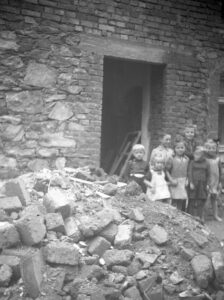
 children who were too weak to make it to the Baltic states. There were thousands of these children, and they were sent to Soviet homes run by the military administration. That was the fate of approximately 4,700 German children in 1947, according to historian Ruth Leiserowitz, who has researched the fates of wolf children. Later that year, many of them were sent to the Soviet occupation zone. That zone later became the German Democratic Republic (GDR). Those poor children traveled in freight trains without any straw to sleep on…similar the Holocaust deportation years. These children were young…between 2 and 16 years of age. They arrived in East Germany after four days and four nights…really more dead than alive. There, they were put in orphanages or adopted by avid Communists. They never really escaped Communism…and that is the saddest part of all.
children who were too weak to make it to the Baltic states. There were thousands of these children, and they were sent to Soviet homes run by the military administration. That was the fate of approximately 4,700 German children in 1947, according to historian Ruth Leiserowitz, who has researched the fates of wolf children. Later that year, many of them were sent to the Soviet occupation zone. That zone later became the German Democratic Republic (GDR). Those poor children traveled in freight trains without any straw to sleep on…similar the Holocaust deportation years. These children were young…between 2 and 16 years of age. They arrived in East Germany after four days and four nights…really more dead than alive. There, they were put in orphanages or adopted by avid Communists. They never really escaped Communism…and that is the saddest part of all.

 When I think of a loved one passing, my first thought is…how can it be that life continues on for most of us, but for them, life hit a roadblock. It just seems so strange. Knowing that my father-in-law, who was my second dad, has been in Heaven for nine long years. Of course, he wasn’t the first of my parents to leave, that was my own dad, Al Spencer who left us in 2007. Nor would he be the last parent, because that would be my mother-in-law, Joann Schulenberg. Nevertheless, with each passing, comes that strange feeling that something is amiss in the time continuum of life. One life doesn’t go forward, while all the others do.
When I think of a loved one passing, my first thought is…how can it be that life continues on for most of us, but for them, life hit a roadblock. It just seems so strange. Knowing that my father-in-law, who was my second dad, has been in Heaven for nine long years. Of course, he wasn’t the first of my parents to leave, that was my own dad, Al Spencer who left us in 2007. Nor would he be the last parent, because that would be my mother-in-law, Joann Schulenberg. Nevertheless, with each passing, comes that strange feeling that something is amiss in the time continuum of life. One life doesn’t go forward, while all the others do.
My father-in-law was a good man…a gentle man. He loved his family very much and wanted each of them to be ok when he was gone…but he was tired. I knew it the night before he left us, I even asked him if he was quitting me. He told me that he didn’t know. That told me he did know…and he was quitting me. We had fought so hard for his health, and I hated to see him give up, but…he was so tired. He was gone the next day, and I was not surprised when I got the call. And just like that…a phone call told me that he was gone, and once again I felt like another loved on had hit that roadblock in time, and the rest of us would have to go on without him.
My father-in-law worked hard all his life, in several lines of work. He was a man who was loyal and could always be counted on to get the job done. Not every worker can have that said of him. He was honored with years of service awards, and other awards. One of his favorite jobs, and certainly the most fun was when he drove the 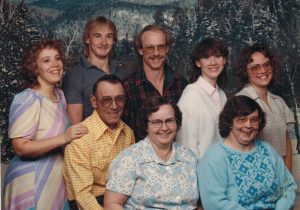
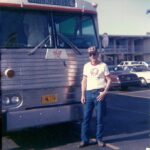 bus for the Casper College Thunderbirds. He got to travel to place in the country that he had never been before…and he was loved by all of them.
bus for the Casper College Thunderbirds. He got to travel to place in the country that he had never been before…and he was loved by all of them.
My father-in-law was such a blessing to me. I couldn’t have asked for anyone better. Having in-laws who are loving, and totally accept you as their own, is the best gift anyone can receive. And my father-in-law was a gift…a wonderful gift, and I will be forever grateful for that gift from God. My father-in-law went to Heaven nine years ago today. We miss him every day. We love you, Dad.

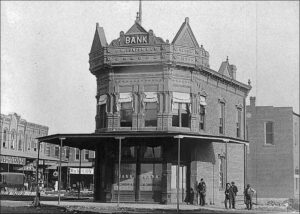 While on a trip to Tulsa, Oklahoma with my sisters, Caryl Reed and Alena Stevens, we happened to drive through the little town of Coffeyville, Kansas. We noticed a sign that said Dalton Graves. I immediate thought of the Dalton Gang and looked it up on my phone. Sure enough, Coffeyville is the site of a number of graves of the Dalton Gang. I find it strange that the gang would choose Coffeyville as the town to rob two banks at the same time, because it was in Coffeyville, that their brother Frank was buried. Frank had been a Deputy US Marshall based out of Fort Smith, Arkansas. On November 27, 1887, while involved in a gunfight with an outlaw gang near the Arkansas River, Frank Dalton was shot and killed by the outlaw, Will Towerly. It’s just odd that they would disrespect Frank’s memory in that way.
While on a trip to Tulsa, Oklahoma with my sisters, Caryl Reed and Alena Stevens, we happened to drive through the little town of Coffeyville, Kansas. We noticed a sign that said Dalton Graves. I immediate thought of the Dalton Gang and looked it up on my phone. Sure enough, Coffeyville is the site of a number of graves of the Dalton Gang. I find it strange that the gang would choose Coffeyville as the town to rob two banks at the same time, because it was in Coffeyville, that their brother Frank was buried. Frank had been a Deputy US Marshall based out of Fort Smith, Arkansas. On November 27, 1887, while involved in a gunfight with an outlaw gang near the Arkansas River, Frank Dalton was shot and killed by the outlaw, Will Towerly. It’s just odd that they would disrespect Frank’s memory in that way.
Nevertheless, it was in Coffeyville, Kansas that the Dalton Gang would make what was for all of them, except Emmett Dalton, a fatal decision. The men rode into town in the early morning hours of October 5, 1892. Their plan was to tie their horses to the hitching posts in front of the bank, however, the town had wisely removed them, meaning that one member would have to hold the horses, or they would have to tie the horses to a hitching post in another part of town. Choosing the latter, the gang tied their horses in what became known as “Death Alley” and headed for the banks.
Unfortunately for the gang, one of the townspeople recognized one of the gang members as he made his way to the bank. Immediately reporting this to the local law and the rest of the town, the people were ready for the gang when they emerged from the banks. A running gun battle ensued, and in the process, four members of the Dalton gang lost their lives. Killed were Bob Dalton, Grat Dalton, Bill Power, and Dick Broadwell. Emmett Dalton, the only surviving member of the gang was severely wounded and was not expected to live. Nevertheless, he recovered and served 14 years in jail before being pardoned.
Bob Dalton, Grat Dalton, and Bill Powers were buried in the same plot, in the Elmwood Cemetery, and for years the only marker for their grave was the metal hitching post to which they tied their horses on that fateful day. When Emmett Dalton was released, he purchased a grave marker for the three men, but the hitching post remains to this day. Also buried in Elmwood Cemetery are the four town defenders who lost their lives in that gunfight. Those lost were Lucius Baldwin, Charles Brown, Marshal CT Connelly, and George Cubine. Needless to 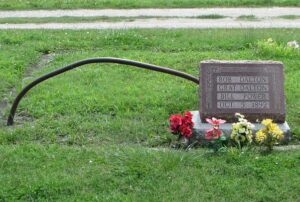
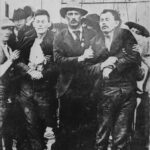 say, their graves received respectful stones from the very beginning, in order to rightly honor these brave men. Emmett Dalton moved to Southern California in 1907. He married Julia Johnson the following year, who survived him. During his California years, he capitalized on his notoriety…writing two books and doing some acting in Hollywood. Later, he sold real estate, as Southern California was developing rapidly with migrants from across the country. He died in 1937 at the age of sixty-six.
say, their graves received respectful stones from the very beginning, in order to rightly honor these brave men. Emmett Dalton moved to Southern California in 1907. He married Julia Johnson the following year, who survived him. During his California years, he capitalized on his notoriety…writing two books and doing some acting in Hollywood. Later, he sold real estate, as Southern California was developing rapidly with migrants from across the country. He died in 1937 at the age of sixty-six.

 My son-in-law, Travis Royce is always willing taking on something new in the yard. Whatever my daughter, Amy Royce can dream up, Travis is willing to make a reality for her. He even goes so far as to indulge her “need” to buy flowers. Travis is more of a lawn guy. He loves mowing their lawn and loves dressing up the yard part of their home into a beautiful sanctuary, and together, they have definitely succeeded. When we are at their house, the back yard if everyone’s favorite place to be. It’s quiet, peaceful, and relaxing. I love their back yard. The kids, Shai Royce and Caalab Royce, have even helped to make the back yard wonderful They got them some heat units so that when the nights are a little chilly, they can still enjoy the patio.
My son-in-law, Travis Royce is always willing taking on something new in the yard. Whatever my daughter, Amy Royce can dream up, Travis is willing to make a reality for her. He even goes so far as to indulge her “need” to buy flowers. Travis is more of a lawn guy. He loves mowing their lawn and loves dressing up the yard part of their home into a beautiful sanctuary, and together, they have definitely succeeded. When we are at their house, the back yard if everyone’s favorite place to be. It’s quiet, peaceful, and relaxing. I love their back yard. The kids, Shai Royce and Caalab Royce, have even helped to make the back yard wonderful They got them some heat units so that when the nights are a little chilly, they can still enjoy the patio.
Travis and Amy have found their own little getaway. They love to go to a little town in Washington called Ilwaco. It is a quaint little town on the Washington coast. They love to stroll through the cute little town and along the trail to Cape Disappointment State Park. The lighthouse there is of particular interest to them. Travis always looks like he is so at peace when he is standing there looking out to the ocean. It’s not really so odd, because he was born in San Diego, California and went to school in Puyallup, Washington. The West Coast is really in his blood, and anyone who knows him can easily see that.
Travis is an innovative man, who is quick thinking and can be very funny. In fact, he loves to be funny. I have 
 always loved that about him, because his humor fills my daughter’s home and life with laughter…and let’s face it…what could be better than a life with laughter in it? I have never been around someone, quite like Travis before…but, when I think about it, he really is one of a kind, with the possible exception on his son, Caalab, who is so much like his dad that it’s uncanny.
always loved that about him, because his humor fills my daughter’s home and life with laughter…and let’s face it…what could be better than a life with laughter in it? I have never been around someone, quite like Travis before…but, when I think about it, he really is one of a kind, with the possible exception on his son, Caalab, who is so much like his dad that it’s uncanny.
Travis has been a part of our family now for almost 27 years, and he has been such a blessing to us. There is no greater blessing for a mother, than to know that her daughter’s husband is her soulmate and best friend. I have been very blessed to know that Travi is exactly that for Amy, and always will be. Today is Travis’ birthday. Happy birthday Travis!! Have a great day!! We love you!!
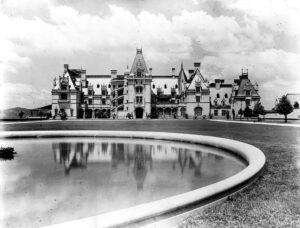
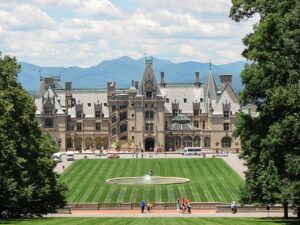 During what became known as the Gilded Age in United States history, extending roughly from 1870 to 1900, the economy grew so rapidly that the wages of Americans, especially in the Northern and Western United States actually surpassed the wages in Europe, especially for skilled workers. Still, increased industrialization demanded an increased unskilled labor force too, so the there was an influx of millions of European immigrants looking for a better life, to fill the need for workers. Basically, the Gilded years were years of overwhelming extravagance.
During what became known as the Gilded Age in United States history, extending roughly from 1870 to 1900, the economy grew so rapidly that the wages of Americans, especially in the Northern and Western United States actually surpassed the wages in Europe, especially for skilled workers. Still, increased industrialization demanded an increased unskilled labor force too, so the there was an influx of millions of European immigrants looking for a better life, to fill the need for workers. Basically, the Gilded years were years of overwhelming extravagance.
While many of the estates of the Gilded Age were in the Eastern United States, not all the great estates were in places like New York City or Newport, Rhode Island. Some of the very wealthy apparently didn’t really like the Northern winter climates, so they chose to build their estates in areas of the South. One of the greatest of these southern estates was the Biltmore Estate near Asheville, North Carolina, The estate was built by George Washington Vanderbilt II between 1889 and 1896, and it is enormous!! The estate covers nearly 11 miles. Of course, the real difference between what we would consider a mansion, and the Gilded Era estates is the fact that the grounds are as extravagant as the homes. The main house of the Biltmore Estate has nearly 200,000 square feet!! Most of us consider a nice sized house to be 2,000 to 3,000 square feet, so 200,000 square feet, for me at least, is beyond what I can even imagine in a house. The construction was a huge undertaking, that literally took building an entire working village near the site to house the workers, manufacturers, and supplies. A three-mile railroad spur was even built just to transport building supplies to the construction site. More than 1,000 workers were hired to build the huge house.
The Biltmore remains in the ownership of the Vanderbilt family, with at least one member of the family living there until 1956, at which point it was operated as a historic museum. It is the largest privately owned home in the United States. To help with the high cost of modern maintenance and expenses, the house and grounds are 
 open to the public, for a price, and a number of ticketed events are held on the site throughout the year. At the request of the City of Asheville, which hoped to revitalize the area with tourism, and in an attempt to bolster the estate’s finances during the Great Depression, Cornelia and her husband opened Biltmore to the public in March 1930 at the request of the City of Asheville.
open to the public, for a price, and a number of ticketed events are held on the site throughout the year. At the request of the City of Asheville, which hoped to revitalize the area with tourism, and in an attempt to bolster the estate’s finances during the Great Depression, Cornelia and her husband opened Biltmore to the public in March 1930 at the request of the City of Asheville.

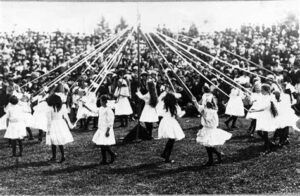 May Day is an almost forgotten day of the “special days” on the calendar. When I was a kid, our mother, Collene Spencer helped us make “May Baskets” and fill them with candy. Then we would take them to the neighbors’ homes and hang them on the doorknobs. We would then knock on the door and go hide. The homeowner then had to try to find us…or they could just shout out their “thank you” and enjoy the candy. No matter what they decided to do, we always had a great time giving May Baskets, and I think it taught us to be givers.
May Day is an almost forgotten day of the “special days” on the calendar. When I was a kid, our mother, Collene Spencer helped us make “May Baskets” and fill them with candy. Then we would take them to the neighbors’ homes and hang them on the doorknobs. We would then knock on the door and go hide. The homeowner then had to try to find us…or they could just shout out their “thank you” and enjoy the candy. No matter what they decided to do, we always had a great time giving May Baskets, and I think it taught us to be givers.
There are a number of traditions that were carried out in the early years of May Day, but have since faded away. Things like the May Pole dance and fire cleansing (I’m not even sure what that is). There might be places  where they still celebrate in this way, and some towns actually have a permanent May Pole. Some other traditions like the May Baskets and spring cleaning have stuck it out for the long haul. I’ll bet you didn’t even know that spring cleaning actually started as a May Day tradition, and yet millions of people do some time of spring cleaning, yard preparation, and even redecorating or remodeling beginning on May Day.
where they still celebrate in this way, and some towns actually have a permanent May Pole. Some other traditions like the May Baskets and spring cleaning have stuck it out for the long haul. I’ll bet you didn’t even know that spring cleaning actually started as a May Day tradition, and yet millions of people do some time of spring cleaning, yard preparation, and even redecorating or remodeling beginning on May Day.
For me, these days, May Day doesn’t involve May Baskets. That is a tradition that went by the wayside with my adulthood. I think my mom would have done that for all of her life, if she could find willing co-conspirators, and that makes me a little sad, because Mom never really asked much of anyone. Nevertheless, she did love her 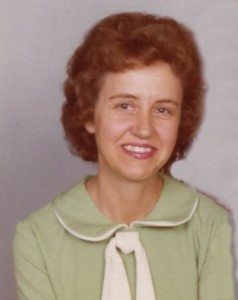
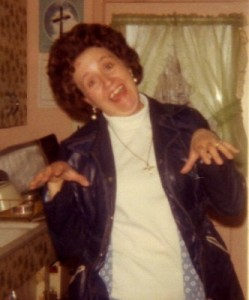 traditions, and it must have been a little sad for her to see May Baskets go by the wayside. For me, May Day really doesn’t mean anything much, except that Spring is finally…really here. The days are longer and warmer. I can get outside and walk on my trail, especially in the early mornings, which have been far too cold prior to this, and still might be a bit cold some mornings. It always seems like the year shifts into high gear on May Day, because while I don’t mind Fall, I don’t look forward to the coming Winter. I am more of a three-season girl, who would love to just skip Winter completely, but I live in the wrong state for that so…anyway, happy May Day everyone. May your celebration…whatever that is, be sweet and special.
traditions, and it must have been a little sad for her to see May Baskets go by the wayside. For me, May Day really doesn’t mean anything much, except that Spring is finally…really here. The days are longer and warmer. I can get outside and walk on my trail, especially in the early mornings, which have been far too cold prior to this, and still might be a bit cold some mornings. It always seems like the year shifts into high gear on May Day, because while I don’t mind Fall, I don’t look forward to the coming Winter. I am more of a three-season girl, who would love to just skip Winter completely, but I live in the wrong state for that so…anyway, happy May Day everyone. May your celebration…whatever that is, be sweet and special.

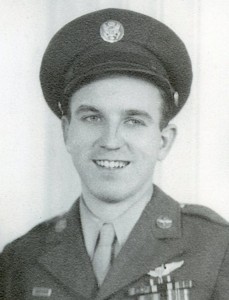 My favorite part of war history, if a person should have a favorite part, would be World War II. It was the war my dad, Allen Spencer fought in, and maybe that is why I am so interested in it and in the B-17 Flying Fortress, from which he fought and returned home. The men and women who fought in World War II are called the Greatest Generation, and maybe because my dad was a part of that, I am partial to that part of history. I find it a bit strange that while the Vietnam Memorial Fund, Inc (VVMF) was incorporated as a non-profit organization to establish a memorial to veterans of the Vietnam War, on April 27, 1979, four years after the Fall of Saigon, but the World War II Memorial didn’t open until April 29, 2004, in Washington DC. Of course, I think it was cool that it opened on my birthday, but it really was a long overdue recognition for the 16 million US men and women who served in the war. The memorial is located on 7.4 acres on the former site of the Rainbow Pool at the National Mall between the Washington Monument and the Lincoln Memorial. The Capitol dome can be seen to the east, and Arlington Cemetery is just across the Potomac River to the west. It really is a beautiful setting and shows the proper honor to these men and women of the Greatest Generation.
My favorite part of war history, if a person should have a favorite part, would be World War II. It was the war my dad, Allen Spencer fought in, and maybe that is why I am so interested in it and in the B-17 Flying Fortress, from which he fought and returned home. The men and women who fought in World War II are called the Greatest Generation, and maybe because my dad was a part of that, I am partial to that part of history. I find it a bit strange that while the Vietnam Memorial Fund, Inc (VVMF) was incorporated as a non-profit organization to establish a memorial to veterans of the Vietnam War, on April 27, 1979, four years after the Fall of Saigon, but the World War II Memorial didn’t open until April 29, 2004, in Washington DC. Of course, I think it was cool that it opened on my birthday, but it really was a long overdue recognition for the 16 million US men and women who served in the war. The memorial is located on 7.4 acres on the former site of the Rainbow Pool at the National Mall between the Washington Monument and the Lincoln Memorial. The Capitol dome can be seen to the east, and Arlington Cemetery is just across the Potomac River to the west. It really is a beautiful setting and shows the proper honor to these men and women of the Greatest Generation.
The 16 million men and women who served in the armed forces of the US are honored at the World War II Memorial, as well as the more than 400,000 who died, and all who supported the war effort from home. The memorial was built using granite and bronze. It features fountains between arches to symbolize hostilities in Europe and the Far East. The arches are bordered by semicircles of pillars, one each for the states, territories, and the District of Columbia. Beyond the pool is a curved wall of 4,000 gold stars, one for every 100 Americans killed in the war. It also features an Announcement Stone that states that the memorial is to honor those  “Americans who took up the struggle during the Second World War and made the sacrifices to perpetuate the gift our forefathers entrusted to us: A nation conceived in liberty and justice.”
“Americans who took up the struggle during the Second World War and made the sacrifices to perpetuate the gift our forefathers entrusted to us: A nation conceived in liberty and justice.”
The project was funded with more than $164 million dollars in private donations, and an additional $16 million donated by the federal government. Former Kansas Senator Bob Dole, who was severely wounded in the war, and actor Tom Hanks were among its most vocal supporters. The really sad part is that only a fraction of the 16 million Americans who actually served in the would ever see it…my dad included. While he was alive in 2004, that was not a trip he got to take before his passing in 2007. Four million World War II veterans were still living at the time the memorial was finally opened, but more than 1,100 dying every day, according to government records. I find that to be so sad.
Roger Durbin of Berkey, Ohio, who served under General George S Patton, inspired the memorial. Durbin was at a fish fry near Toledo in February 1987, when he asked US Representative Marcy Kaptur why there was no memorial on the Mall to honor World War II veterans. It was a question that should have been asked and answered long ago. Nevertheless, Kaptur, an Ohio Democrat, introduced legislation to build one, starting a process that would stumble along through 17 years of legislative, legal, and artistic entanglements. Durbin died of pancreatic cancer in 2000, without ever actually seeing his hard work come to fruition. While he didn’t live to see his project come to life, I and so many other children of World War II veterans and lost loved ones, will be forever thankful to him for finally making sure our loved ones were properly honored. The monument was formally dedicated May 29, 2004, by US President George W Bush, but I am pleased that it actually opened on 
 my birthday in 2004. My birthday, because it was just two days after my dad’s birthday, has always been a special time that we shared. Of course, I was due and supposed to arrive on Dad’s birthday, but I’ve always said I was a little stubborn, so I held out. Nevertheless, we usually celebrated our days together, so I feel like his memorial opening on my birthday was really very cool.
my birthday in 2004. My birthday, because it was just two days after my dad’s birthday, has always been a special time that we shared. Of course, I was due and supposed to arrive on Dad’s birthday, but I’ve always said I was a little stubborn, so I held out. Nevertheless, we usually celebrated our days together, so I feel like his memorial opening on my birthday was really very cool.
 by guest writer – Brenda Schulenberg
by guest writer – Brenda Schulenberg
Caryn became part of our family on March 1, 1975…over 47 years ago, when she married my brother, Bob!!! Little did any of us know at that time that Caryn would become such an important part of the Schulenberg family. Most of us don’t really remember too much of life without Caryn being a part of it. She has been a major part of our family for so many years now…and I would never want to imagine our family without her as a part of it.
In the early years, Caryn spent most of her time raising her two girls, my nieces, Corrie and Amy. Then, before we knew it along came her four grandchildren Chris, Shai, Caalab and Josh. All of Caryn’s grandchildren have a big place in her heart. She really enjoys being a mother and grandma…and in 2018, Caryn became a great grandma. She now has two great grandchildren and another due in October of this year. She loves the time she gets to spend with them.
On October 14, 2018, Caryn’s faith in God was brought to life. On that day her husband Bob, my brother,  suffered a heart attack. We were all very scared and thanks to Caryn’s faith in God, some very fast responders and some miracles too, Bob made a full recovery. Not that they needed it, but Bob and Caryn now realize how special they are to each other.
suffered a heart attack. We were all very scared and thanks to Caryn’s faith in God, some very fast responders and some miracles too, Bob made a full recovery. Not that they needed it, but Bob and Caryn now realize how special they are to each other.
Through the years, and as both sets of parents aged, Caryn was the primary care giver for all four parents…hers and Bob’s. It was tough on all of us to lose them, but they are in a far better place now. Also in October 2013, when I got sick Caryn saved my life by convincing me that I had to go to the hospital.
Caryn has always enjoyed bowling. She and Bob also like to go on walks and hikes when the weather permits. Bob and Caryn enjoy traveling for their annual hiking/anniversary trip to Thermopolis and to the Black Hills. They also traveled for bowling tournaments too.
Caryn spends time focusing on her health and my brother Bob’s. Caryn always has been very aware of how important good health is for all of us, but now that she is not having to care for all of our parents and work, she has been focused on herself for once…and she has been very successful in this area! Caryn had foot surgery this past year and as you can imagine she did not let that hold her back on the things she likes to do.
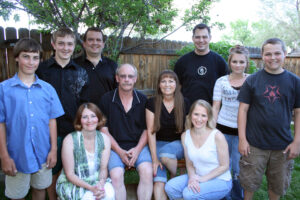
In May 2019 Caryn started a new journey…retirement! She loves it. I’m sure Caryn like everyone else that is retired finds herself very busy with traveling, hiking, her great grandchildren, and of course blogging!!!! Caryn has also been able to do some traveling with her sisters to visit family.
Caryn is an amazing woman! She is one of the best sisters-in-law (I consider her my sister) that I could ever ask for. Today is Caryn’s birthday and I just want to say Happy Birthday Caryn. We all love you and appreciate you very, very much!!!!

 Children, especially young children, don’t really understand what their working parents do every day, and sometimes can even feel abandoned when they are especially young. It’s not their fault. They love their parents, and all children experience some separation anxiety at some point. Once they get used to it, they are fine, of course, but those early days can be tough.
Children, especially young children, don’t really understand what their working parents do every day, and sometimes can even feel abandoned when they are especially young. It’s not their fault. They love their parents, and all children experience some separation anxiety at some point. Once they get used to it, they are fine, of course, but those early days can be tough.
I don’t really know the motivation behind the day they call Take Our Daughters And Sons To Work Day, also called Take Your Child to Work Day. It is a national day that gives children in the United States a brief look at what goes on in the working world…more specifically their parent’s working world. Of course, it’s not always completely authentic, because many of the organizations set up special events for that day. I personally think it would be better to make it as real as possible for the child…if the goal was to show the child what their parent does for a living. The program was developed by the Take Our Daughters And Sons To Work Foundation, which is a non-profit educational organization. As the name depicts, the day revolves around “parents taking their children to work to expose students to future job possibilities and the value of education.” Originally, it was called Take Our Daughters To Work Day, but was expanded to include boys in 2003. I think that originally, the focus was on office jobs, which were considered more for the women, and the jobs men had might have seemed unsafe for children. I suppose that is still the case, but you can’t really discriminate on those jobs either, even if taking a child on a police ride-along might be dangerous.
Take Your Child To Work Day is celebrated in over 200 countries, but in the United States, it takes place on the fourth Thursday in April every year. The most recent Take Our Daughters And Sons To Work Day took place on Thursday, April 23, 2020. I suppose that Covid-19 Pandemic stopped them after that and I don’t know if companies are planning them for this year or not. Take Our Daughters to Work Day originated in New York City in the summer of 1992, started by the “Ms. Foundation for Women” and its president, Marie C. Wilson, the 
 Women’s foundation treasurer, Daren Ball, and with support from foundation founder Gloria Steinem. It really began as a part of the Women’s Liberation movement, I suppose, but today it is very different than it was then. I am definitely not a “women’s libber” kind of girl, so that idea does not appeal to me at all. The first celebration took place on April 22, 1993, and has since been celebrated usually on the fourth Thursday of April in order for the 37 million children, parents, schools in over 3.5 million workplaces across the country, in addition to participants in over 200 countries around the world, to plan ahead for the annual event. The day is generally a school day for most children in the United States, so schools are provided with literature and encouraged to promote the program. Schools are provided with materials for incorporating career exploration into classwork on the day before or after the event. In 2007 the “day” became its own separate foundation, the Take Our Daughters and Sons to Work program was turned over to Carolyn McKecuen, a MacArthur Award recipient, who took effective control as its executive director before relocating to Elizabeth City, North Carolina, where it continues to this day. Gloria Steinem continues to maintain a role with the Take Our Daughters and Sons to Work Foundation as a member of its board of directors.
Women’s foundation treasurer, Daren Ball, and with support from foundation founder Gloria Steinem. It really began as a part of the Women’s Liberation movement, I suppose, but today it is very different than it was then. I am definitely not a “women’s libber” kind of girl, so that idea does not appeal to me at all. The first celebration took place on April 22, 1993, and has since been celebrated usually on the fourth Thursday of April in order for the 37 million children, parents, schools in over 3.5 million workplaces across the country, in addition to participants in over 200 countries around the world, to plan ahead for the annual event. The day is generally a school day for most children in the United States, so schools are provided with literature and encouraged to promote the program. Schools are provided with materials for incorporating career exploration into classwork on the day before or after the event. In 2007 the “day” became its own separate foundation, the Take Our Daughters and Sons to Work program was turned over to Carolyn McKecuen, a MacArthur Award recipient, who took effective control as its executive director before relocating to Elizabeth City, North Carolina, where it continues to this day. Gloria Steinem continues to maintain a role with the Take Our Daughters and Sons to Work Foundation as a member of its board of directors.
The idea is that employees across the United States and around the world get to invite their own children or relatives to join them at work, but the program also encourages employees to invite children from residential programs or shelters who may not be exposed to many adults in skilled professions today. I have never worked in a company that specifically participated in Take Your Child To Work Day, but rather where I worked, at The Stengel Agency, we had an informal option to bring a child in randomly. Mydaughter, Amy Royce and granddaughter, Shai Royce both actually worked with me, and my grandchildren, Chris Petersen, Shai Royce, Caalab Royce, and Josh Petersen have all spent time with me when they couldn’t go to school for whatever 
 reason, including not feeling well. They have slept under my desk, because they wanted to be by Grandma at that time, and my boss, Jim Stengel, being the wonderful man that he was, made allowances for my needs. My co-worker, Carrie Beauchamp brought her daughter, Amanda Ingram to the office, and now she is also an agent in that office, so while we didn’t have a formal program, our children and grandchildren not only spent time in the office, but actually went to work with us in the office. I hope companies continue this program, because I think it is a great program.
reason, including not feeling well. They have slept under my desk, because they wanted to be by Grandma at that time, and my boss, Jim Stengel, being the wonderful man that he was, made allowances for my needs. My co-worker, Carrie Beauchamp brought her daughter, Amanda Ingram to the office, and now she is also an agent in that office, so while we didn’t have a formal program, our children and grandchildren not only spent time in the office, but actually went to work with us in the office. I hope companies continue this program, because I think it is a great program.

